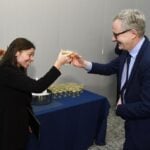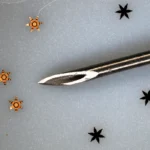Q&A with Sashank Reddy, Surgeon, Scientist, and JHTV Senior Medical Director
In addition to being a plastic and reconstructive surgeon, Sashank Reddy, MD, PhD, is a scientist and biomedical entrepreneur. Early in his career he worked on new company creation at Third Rock Ventures with some of the firm’s founders. More recently he has co-founded the Baltimore-based companies LifeSprout, Inc. and Spacetime Therapeutics.
These experiences have helped Reddy in his role as senior medical director at Johns Hopkins Technology Ventures (JHTV), a hub that facilitates the translation and commercialization of Johns Hopkins University discoveries. We asked Reddy, also an INBT associate faculty member, about his views on life science technologies at Hopkins and the INBT.
Q: What is your role at JHTV?
A: As senior medical director I have two main roles. First, I am privileged to work on translational plans for some of the most high-value biomedical discoveries across Hopkins. With my JHTV colleagues, I identify ways to push these early discoveries further down the value chain. Ultimately, we aim to unlock that value through new company creation, corporate partnerships, or other means.
I also work with Hopkins and JHTV leadership on effective technology translation strategies. We develop programmatic resources and find ways to reduce the technology development friction for my faculty colleagues, including those at the INBT.
Q: What are your views on the translation potential at Hopkins and the INBT?
A: The opportunities are enormous. We have some of the world’s best basic scientists and world class medical institutions at Hopkins, with new discoveries happening frequently. Visionary investments by university leaders and developments in the biotechnology industry, generally, have facilitated turning those discoveries into new inventions.
For INBT specifically, I think the opportunities are vast. My colleagues at the medical school where I am based, broadly think in terms of disease etiology. We regularly discover molecules that contribute to disease development but sometimes struggle to translate those biological insights into actionable therapeutics and diagnostics. These challenges are where engineers excel. For example, an engineer could create a novel protein therapeutic to intervene in pathogenesis, or as we saw during the COVID pandemic, develop nanoparticles to deliver novel vaccines. In this way, by bridging discovery and action, I see INBT engineers and clinician scientists as natural partners.
Q: Are there certain translation areas you see growing?
A: Gene delivery and genome engineering is one important area. Cellular engineering is another and we have several INBT faculty who work on aspects of both. Yet another is biological and molecular sensing. Engineers like Jeff Wang really add depth to that area. Increasingly, there is synergy in these approaches as we see call and response circuits being programmed into cells to arrest disease or enhance function.
Q: What challenges do academic institutions face with trying to bring research discoveries to the marketplace?
A: One is the siloing of knowledge and investigators within schools and across campuses. Many times, useful inventions come at the intersection of different fields, so facilitating real, meaningful communication across disciplines is vital. The other is a lack of translational know-how. As faculty we are trained to drill deep into particular areas of scientific and clinical expertise. But we are generally ill informed about the more prosaic aspects of technology translation – prototyping, preclinical testing, manufacturing – unless we have spent some time in the commercial realm. Engineers are generally better at this but matching their expertise with the highest value problems remains a challenge.
Q: How can JHTV and INBT address those challenges?
A: The INBT can help break those silos. We can better showcase the discovery and design research of our faculty across the university and highlight successful collaborations. This can lead to a virtuous cycle where basic discovery-oriented scientists can identify partners, and the powerful platforms developed by our engineers can be applied to the most salient problems.
JHTV helps across multiple stages. Early on they administer translational funding for needs like early prototyping and de-risking experiments. Several INBT faculty have received this funding. They also administer educational programs like i-Corps and faculty bootcamps that address the know-how problem I mentioned earlier. Later in the process, JHTV offers space and mentorship for start-up incubation and/or introduction to corporate partners.
Working together, we can break down those silos and improve bidirectional learning so we can better communicate the goods, the tools, and the faculty we have, and focus all of them on the most impactful problems.
Q: Do you have other thoughts on translation initiatives?
A: We are living in an extraordinary time for biomedical innovation. No one who has lived through these last two years could dispute that. Consider COVID vaccines as an example. In one year the biomedical community discovered, developed, tested, and broadly deployed efficacious vaccines against a wholly unknown pathogen. And this was done using novel modalities – lipid nanoparticles and mRNA. No one imagined that could be done so quickly.
Biomedical discoveries are becoming more numerous and occurring at a faster pace. As mentioned previously, clinical scientists and engineers are natural partners. And their partnerships are a catalyst for turning scientific discoveries into meaningful action that can benefit society.





